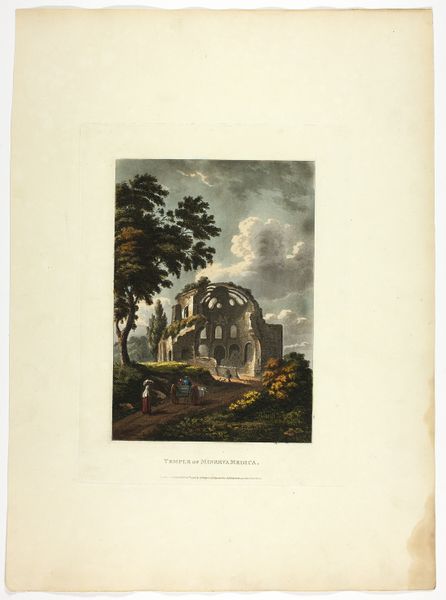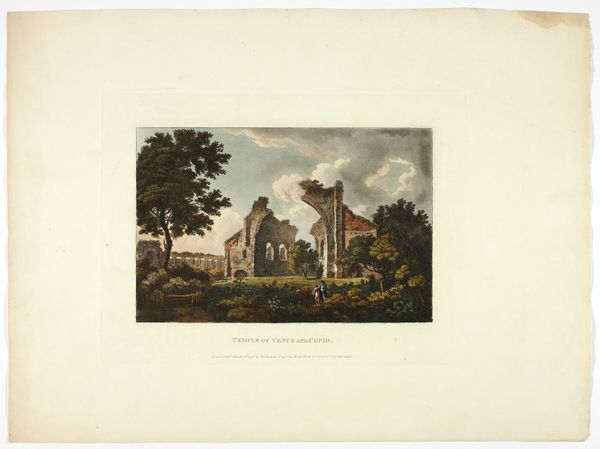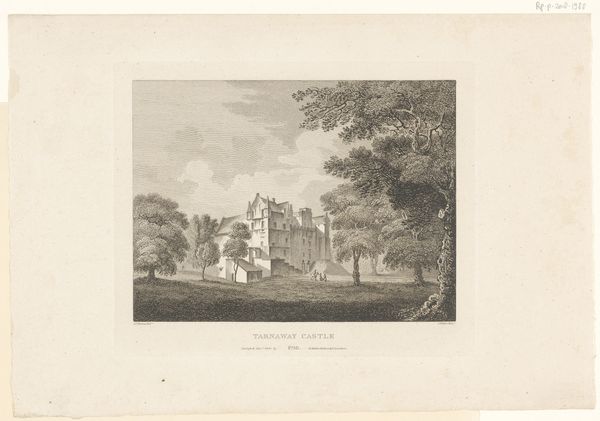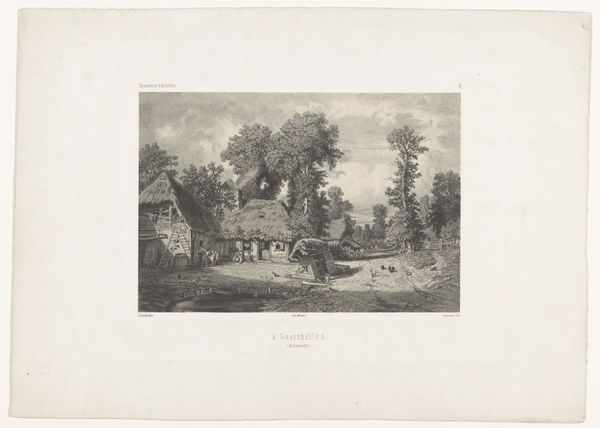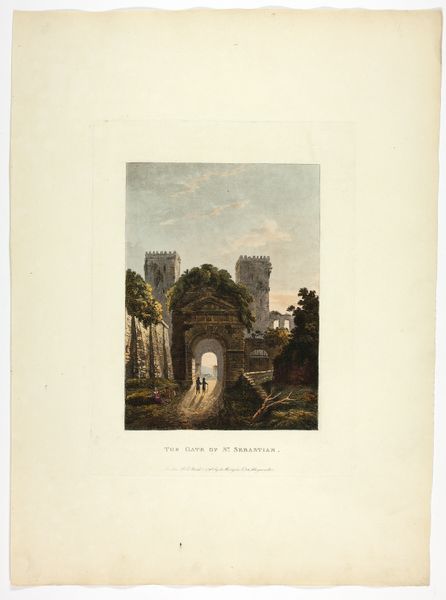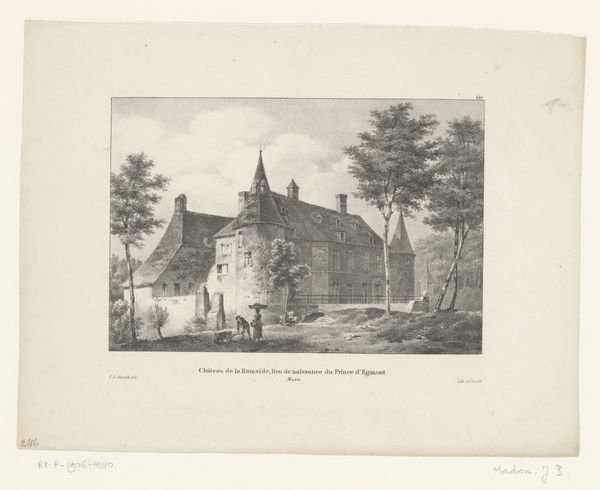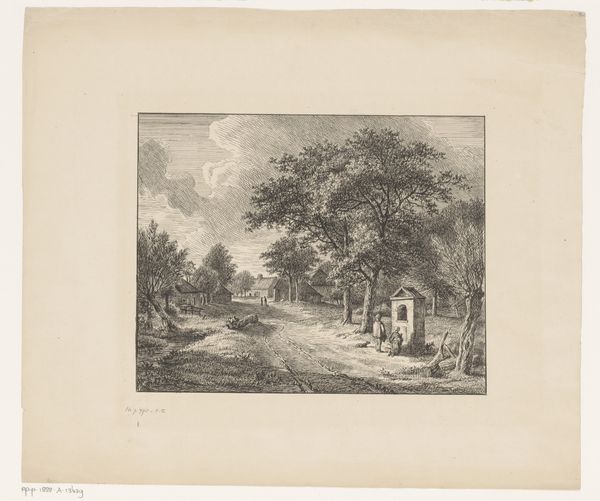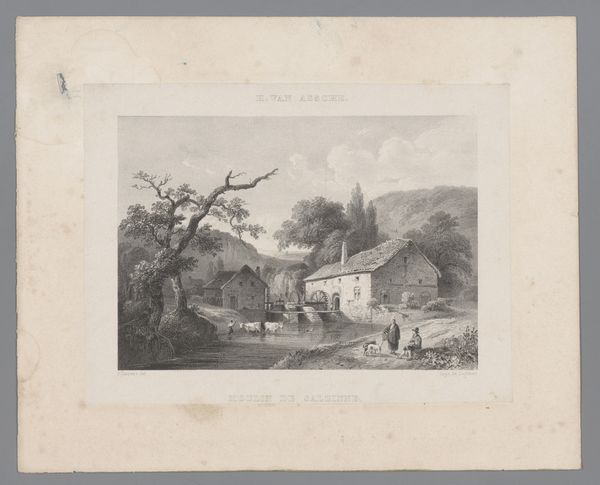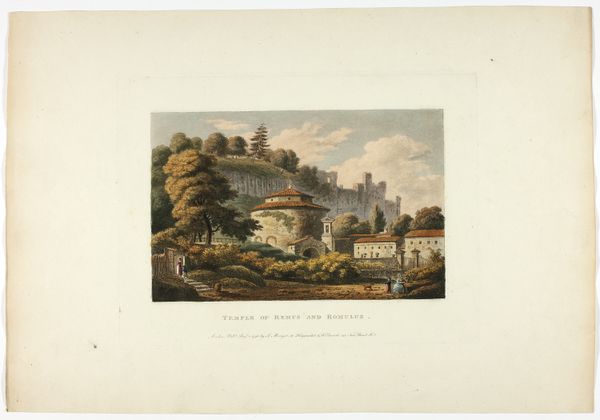
Tower of Pignattara, plate twenty-two from the Ruins of Rome Possibly 1798
0:00
0:00
drawing, painting, print, paper, watercolor, engraving
#
drawing
#
water colours
#
painting
# print
#
landscape
#
paper
#
watercolor
#
england
#
romanticism
#
cityscape
#
engraving
Dimensions: 448 × 330 mm (sheet)
Copyright: Public Domain
This aquatint etching of the Tower of Pignattara was made by M. Dubourg in the early 19th century as part of a series on Roman ruins. Aquatint is a printmaking technique used to create tonal effects, producing broad washes of tone, rather than lines. To make this print, Dubourg likely applied a porous ground of resin or sugar to a copper plate, then immersed it in acid. The acid would have bitten into the plate, creating a rough surface that holds ink. The areas that are more deeply bitten hold more ink, creating darker tones in the final print, while areas that are protected from the acid remain white. This print would have required multiple rounds of etching to achieve the subtle gradations of light and shadow we see here. Prints like this were very popular, particularly with tourists, and played a significant role in shaping perceptions of Roman antiquity, feeding a growing demand for picturesque imagery. They also testify to the labor and skill involved in traditional printmaking, a craft-based practice that allowed for the mass production of images, and the commodification of culture.
Comments
No comments
Be the first to comment and join the conversation on the ultimate creative platform.
